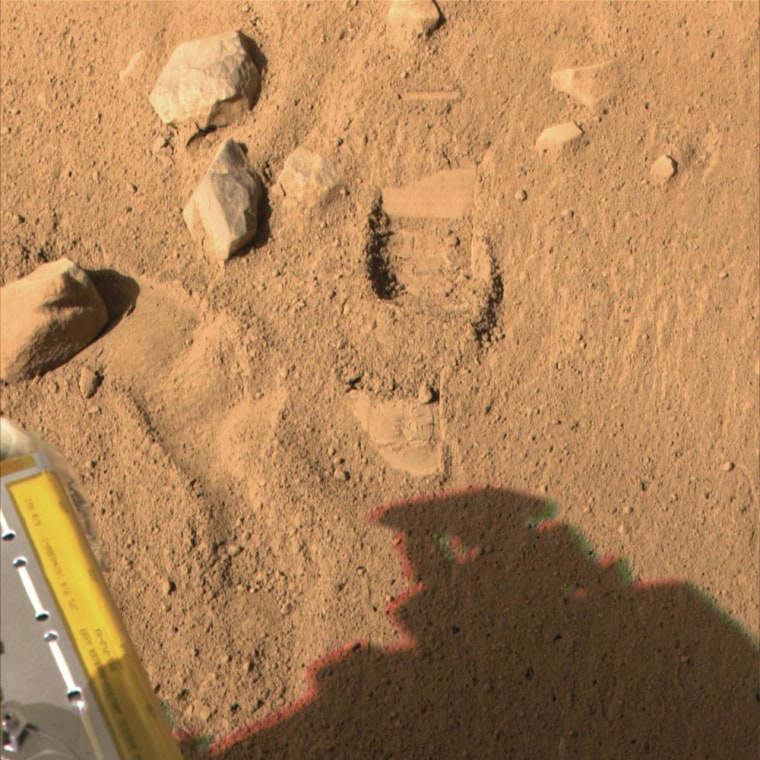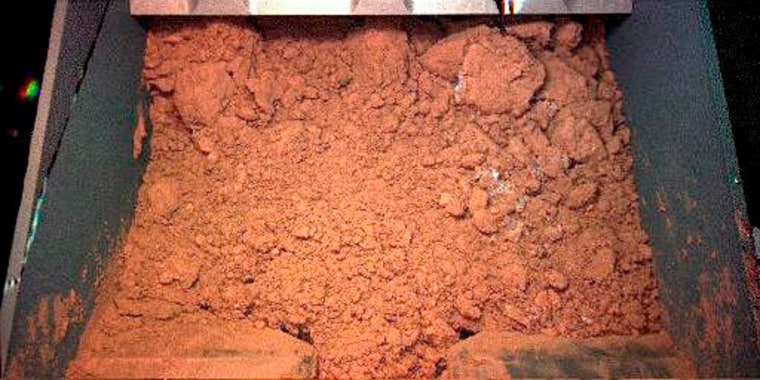NASA’s newest spacecraft got down and dirty on Mars, taking its first practice scoop of Martian soil ahead of the actual dig expected later this week, scientists said Monday.
The test dig made Sunday by Phoenix Mars Lander’s 8-foot-long robotic arm uncovered bits of bright specks in the soil believed to be ice or salt.
“We see this nice streak of white material,” said Pat Woida, senior engineer at the University of Arizona at Tucson, which is directing the mission. “We don’t know what this material is yet.”
Scientists expect to find out definitively what the specks are made of once the lander begins conducting its chemical tests.
Phoenix landed in the Martian arctic plains on May 25 to begin a three-month hunt, aimed at finding out whether the far northern latitudes could support primitive life. Its main task is to excavate trenches in the permafrost in search of evidence of past water and organic compounds considered the chemical building blocks of life. The cost of the mission is $420 million.
Close-up images beamed back by the lander over the weekend revealed that its three legs are resting on what appears to be a slab of ice. It apparently was uncovered when the spacecraft’s thrusters blew away the topsoil. Also over the weekend, engineers fixed a nagging short-circuit problem on one of the lander’s instruments.

With the practice dig out of the way, scientists will scour the landscape for a prime spot for the lander to perform three side-by-side digs. Phoenix will deliver the scoopfuls of dirt to its miniature ovens, and vapors from the heating will be analyzed for traces of organic compounds. Later digs will focus on bringing samples to its microscope and wet chemistry lab.
“We’re ready to go,” said Ray Arvidson of Washington University, who is known by team members as the “dig czar.” “We’re pretty excited to get on with business here.”
Since Phoenix’s arrival, scientists have roped off no-digging zones to preserve parts of the landing site. They’ve also named rocks and other geologic features after fairy-tale and nursery rhyme characters, including “Humpty Dumpty” and “Alice.”
